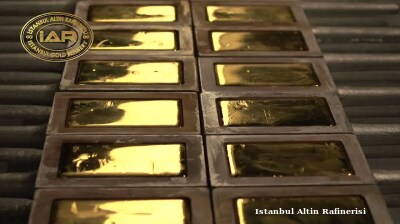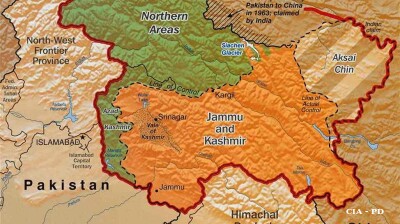China’s preparation for possible coercive action against Taiwan has intensified dramatically in recent years and is increasing by the day. Driven by President Xi Jinping’s supposed aim of annexing Taiwan by 2027, the People’s Liberation Army (PLA) has steadily increased deployments, exercised new weapon systems and sharpened joint operations to enforce coercive deterrence around the island.
Analysts warn Taiwan - even with US and wider alliance support - may face overwhelming missile, air, sea and cyber pressure in a shock and awe type scenario should Beijing move unannounced.
Ongoing ‘fig-leaf’ exercises
The PLA’s Eastern Theatre Command has conducted large‑scale, multi‑branch war games for the last few years, including “Joint Sword‑2024A/B” and “Strait Thunder‑2025A” in preparation for a possible real blockade, air‑sea strike and amphibious assault operations.
These drills have involved live fire, aircraft carriers such as Shandong, Type 052D and Type 055 destroyers, coastguard vessels and long‑range rocket and missile forces, multiple sources reveal.
In April 2025’s Strait Thunder‑2025A, the PLA deployed over 100 aircraft sorties (37 crossing the Taiwan Strait median line), 15 naval vessels and four China Coast Guard ships according to the Global Taiwan Institute. A carrier battle group - led by Shandong - moved into strategic practice zones south‑east of Taiwan. Live‑fire rocket barrages targeted simulated ports and energy facilities.
These operations are clear and explicit rehearsals of limited blockade, joint strike and invasion scenarios, coordinated across air, sea, missile, amphibious and coastguard components.
Known weapons systems deployed and in place
Missiles and rocket launchers
PLA Rocket Force units are positioned across the narrow Taiwan Strait, opposite the self-governing island and with powerful A2/AD (anti‑access/area denial) capabilities. These include:
-
Dongfeng ballistic missiles: DF‑21D (anti‑ship), DF‑26 (intermediate range), DF‑17 (hypersonic glide), DF‑27, and the new YJ‑21 hypersonic missile.
-
PHL‑16 (also known as PCL‑191) mobile modular rocket launchers capable of ranges up to 360 km, deployed along the Chinese coast and exercised in strikes on simulated ports and coastal installations according to the FT.
Naval and amphibious forces
The PLA Navy, now one of the world’s largest fleets, includes Type‑052D and Type‑055 guided‑missile destroyers with universal VLS and YJ‑18 anti‑ship missiles, as well as amphibious Type‑071 and Type‑075 assault ships. A new class of Shuiqiao (“water‑bridge”) landing barges, observed in March 2025, can form floating causeways to deliver main battle tanks and vehicles ashore at varied coastal locations.
Similarly, a fleet of amphibious tank boats under the Fujian Group Army control as well as a wing‑in‑ground‑effect aircraft (ekranoplan) have also featured prominently in recent live‑fire training along China’s Fujian coast opposite Taiwan according to British media.
Air and reconnaissance assets
The PLA air force now fields advanced fighters J‑10, J‑16, J‑20 stealth jets, plus H‑6 bombers, early‑warning platforms like the KJ‑500, and aerial refuelling Y‑20 tankers to extend combat range. These jets routinely patrol Taiwan’s ADIZ, largely unopposed even if observed and are crossing the median line with increasing frequency – according to a Financial Times report as many as 245 times a month.
Directed‑energy and cyber‑enabled warfare
China has reportedly also deployed high‑energy laser weapons aimed at disabling drones, aircraft, coastal infrastructure and reinforcing blockades through non‑kinetic precision strikes says The Hong Kong Post and the PLA’s Strategic Support Force and Eastern Theatre cyber units now integrate EW, jamming and cyber tools to disrupt Taiwan’s C2 and strengthen joint operations.
Implications and Taiwan’s response
United States and allied concern
US military officials, including Admiral Paparo, warn that PLA readiness now allows it to mask - ‘ ‘fig leaf’ style - invasion preparations as routine exercises. The shift from peacetime to war posture could unfold within a matter of hours, he was reported as saying by the Financial Times.
Taipei’s countermeasures
Taiwan meanwhile has bolstered its own defences: acquiring US ATACMS and NASAMS, accelerating production of indigenous Hsiung Feng‑III anti‑ship missiles, and undergoing its largest ever Han Kuang exercises.
Day to day, troop movements are seen around the capital Taipei in numbers rarely seen in recent years, albeit seemingly carried out in the early morning hours.
On the electronic front, Taipei is also exploiting apparent PLA command and cyber vulnerabilities by investing in electronic warfare, satellite resilience and resilience to degrade Chinese C2 networks, claims The Diplomat.
The days ahead
Beijing’s growing arsenal of missile‑based strike systems, amphibious deployment platforms, high‑end air power and laser/cyber capabilities reflects a sustained campaign to squeeze Taiwan’s defensive window. Combined with persistent grey‑zone tactics such as air incursions, coastguard pressure and cyber intrusion, the PLA has moved steadily closer to a capability to execute a sudden strike or sustained blockade.
Nonetheless, ongoing Taiwanese and allied preparations, alongside Taiwan’s strengthening of asymmetric deterrents, leave ambiguity over the timing and feasibility of an actual invasion. But with Xi Jinping’s objective of annexation by 2027, the window for Taiwan’s military manoeuvring is narrowing rapidly.
Features

BEYOND THE BOSPORUS: Prosecutors make move on “fictitious export schemes” of Istanbul Gold Refinery
Observers point to intra-regime gangs seizing each other’s wealth, remember Erdogan’s “Hello Fatih” phone calls and ponder whether wanted man Turgay Ciner is in London.

Taliban visit to India upsets Pakistan, signals New Delhi's changing Afghan posture
Coinciding with the visit, Pakistan conducted military operations inside Afghanistan, followed by airstrikes on multiple border towns. Retaliation against Pakistan's police training facilities and border outposts followed.

Pakistan’s India-shaped chip on the shoulder, and why a peaceful coexistence is as elusive as ever
Pakistan must first redefine how it sees India - not solely as a threat to be contained but as a neighbour with whom coexistence is unavoidable. That psychological leap has eluded generations of Pakistani leaders.

Trump shocked by China’s move on rare earths, threatens more 100% tariffs
"Some very strange things are happening in China!" Trump wrote in a post on his Truth Social account on October 10, adding "They are becoming very hostile."




